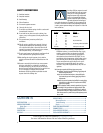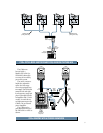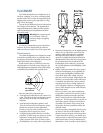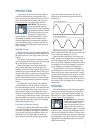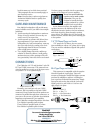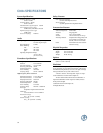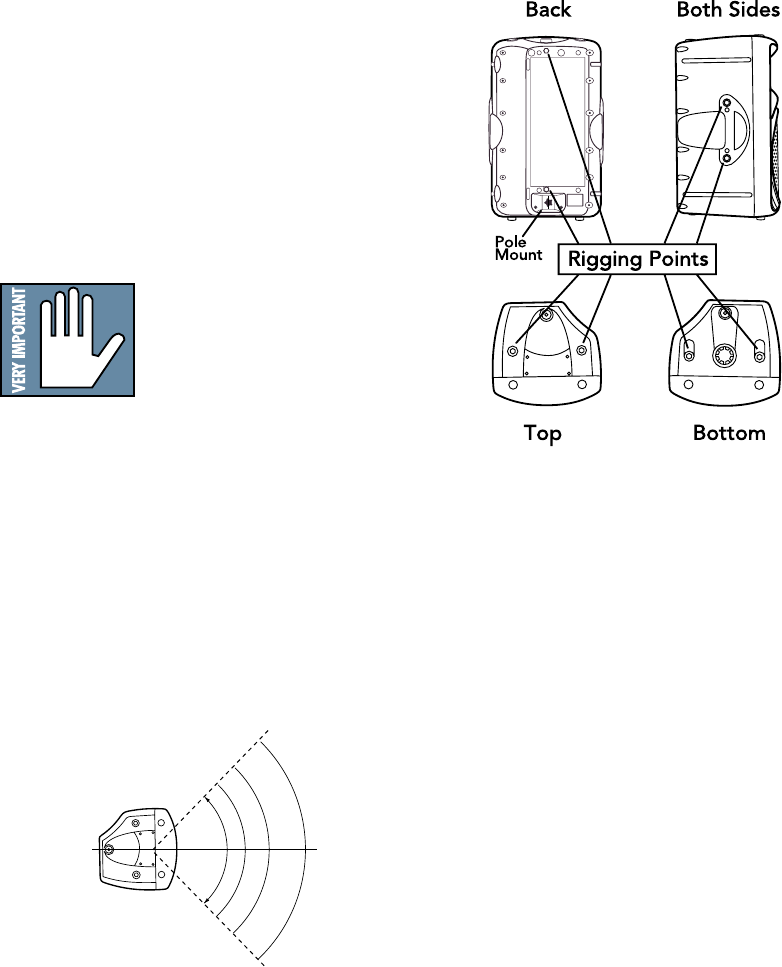
6
PLACEMENT
The C300z loudspeakers are de signed to sit on
the fl oor, a tabletop, or to fi t on a stan dard tri pod
speaker stand. They can also be suspended by the
rigging points, shown at the right (also see "Rig-
ging" on the next page).
You can lay the cabinet down on its side and use
the C300z as a fl oor monitor. The asym met ri cal
trap e zoi dal shape of the cab i net pro vides a perfect
angle for aim ing up to ward performers from the
front of the stage.
Warning: Do not stack speak-
ers in a column. This is to
avoid the danger of toppling
speakers.
As with any loud speak ers, pro tect them from
moisture. If you are setting them up out doors,
make sure they are under cov er if you ex pect rain.
Room Acoustics
The C300z loudspeakers are de signed to sound
as neu tral as possible; that is, to re pro duce the in-
put signal as ac cu rate ly as pos si ble, mon i tor ing the
audio signal rather than chang ing it.
Room acous tics play a cru cial role in the over-
all per for mance of a sound system. How ev er, the
wide high-frequency dis per sion of the C300z helps
to minimize the prob lems that typically arise.
Top
90
0
Dispersion
up to 20 kHz
90
0
Here are some other placement tips:
• Avoid placing loudspeakers in the cor ners of a
room. This increases the low fre quen cy output
and can cause the sound to be muddy and
indistinct.
• Avoid placing loudspeakers against a wall.
This, too, increases the low fre quen cy out put,
though not as much as cor ner placement.
However, if you do need to reinforce the low
fre quen cies, this is a good way to do it.
•
Avoid placing the speakers di rect ly on a hollow
stage fl oor. A hollow stage can res o nate at certain
frequencies, causing peaks and dips in the fre-
quency re sponse of the room. It’s better to place
the loudspeakers on a sturdy ta ble or tri pod stands.
•
Position the loudspeakers so the high-fre quen cy
drivers are 2 to 4 feet above ear
lev el for the
audience (make al low anc es for a standing/
dancing-in-the-aisles au di ence). High fre-
quen cies are high ly directional and tend to be
ab sorbed much easier than low er fre quen cies.
By pro vid ing direct line-of-sight from the
loudspeakers to the au di ence, you increase
the overall bright ness and intelligibility of the
sound system.
• Highly reverberant rooms, like many gym na -
si ums and auditoriums, are a nightmare for
sound system in tel li gi bil i ty. Multiple re fl ec -
tions off the hard walls, ceiling, and fl oor
play havoc with the sound. Depending on the
sit u a tion, you may be able to take some steps
to min i mize the refl ections, such as putting
car pet ing on the fl oors, closing draperies to
cover large glass windows, or hanging tap es -
tries or other materials on the walls to absorb
some of the sound.
However, in most cases, these remedies are
not possible or practical. So what do you do?
Making the sound system louder gen er al ly
doesn’t work because the re fl ec tions become
louder, too. The best ap proach is to provide as
much direct sound coverage to the audience
as pos si ble. The farther away you are from
the speak er, the more prominent will be the
re fl ect ed sound.
Use more speakers stra te gi cal ly placed so they
are closer to the back of the au di ence. If the
distance be tween the front and back speakers
is more than about 100 feet, you should use a
delay processor to time-align the sound. (Since
sound travels about 1 foot per mil li sec ond, it
takes about 1/10 of a second to trav el 100 feet.)




